Abstract
Methodology for determining amino acid sequences of proteins by tandem mass spectrometry is described. The approach involves enzymatic and/or chemical degradation of the protein to a collection of peptides which are then fractionated by high-performance liquid chromatography. Each fraction, containing as many as 10-15 peptides, is then analyzed directly, without further purification, by a combination of liquid secondary-ion/collision-activated dissociation mass spectrometry on a multianalyzer instrument. Interpretation of collision-activated dissociation mass spectra is described, and results are presented from a study of soluble peptides produced by treatment of apolipoprotein B with cyanogen bromide and trypsin.
Full text
PDF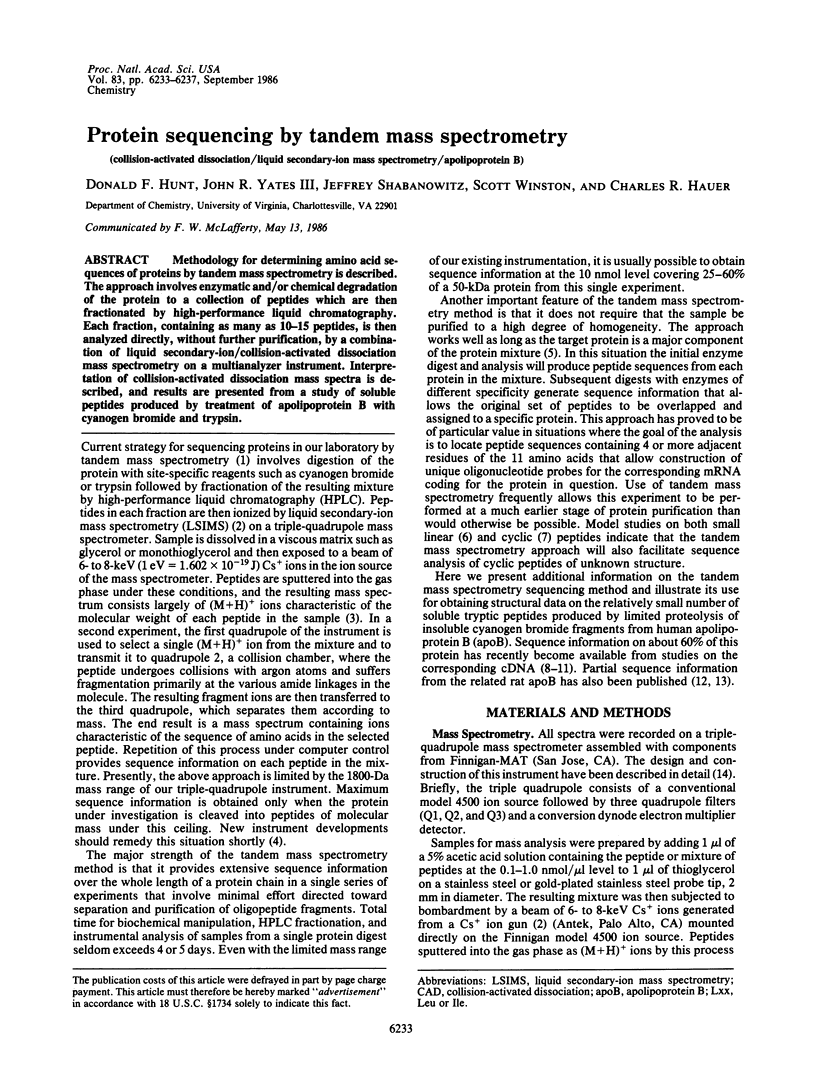
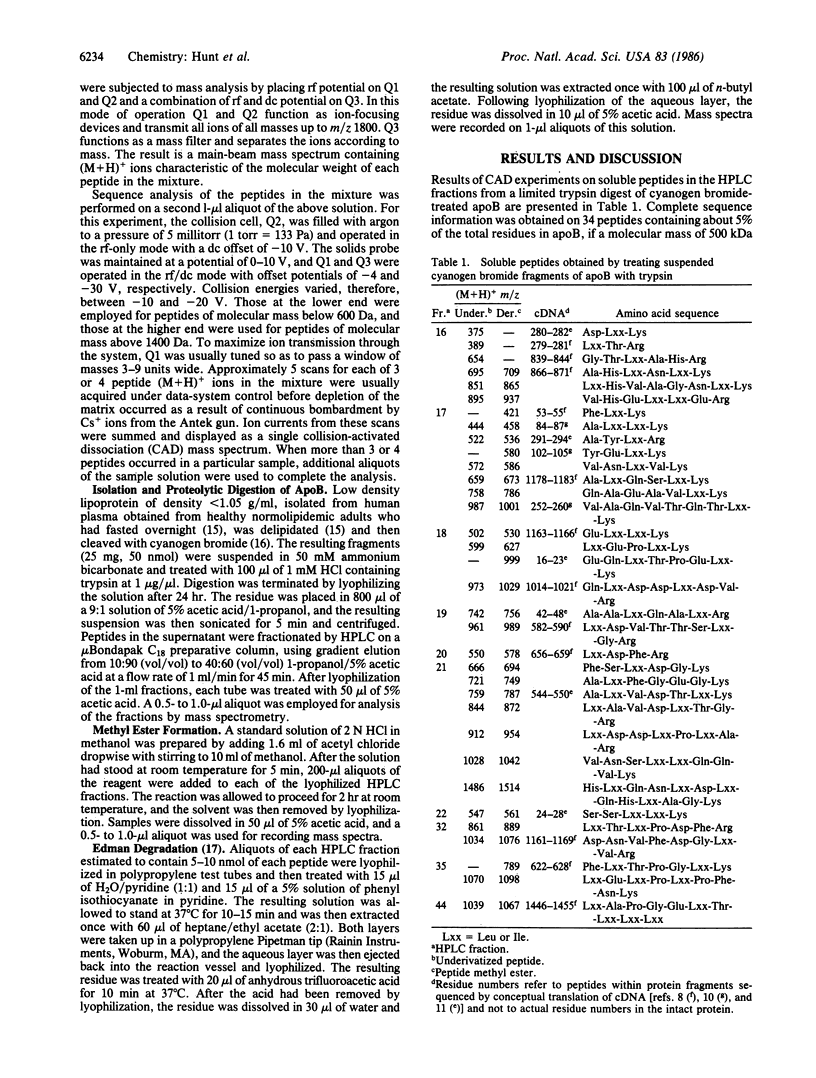
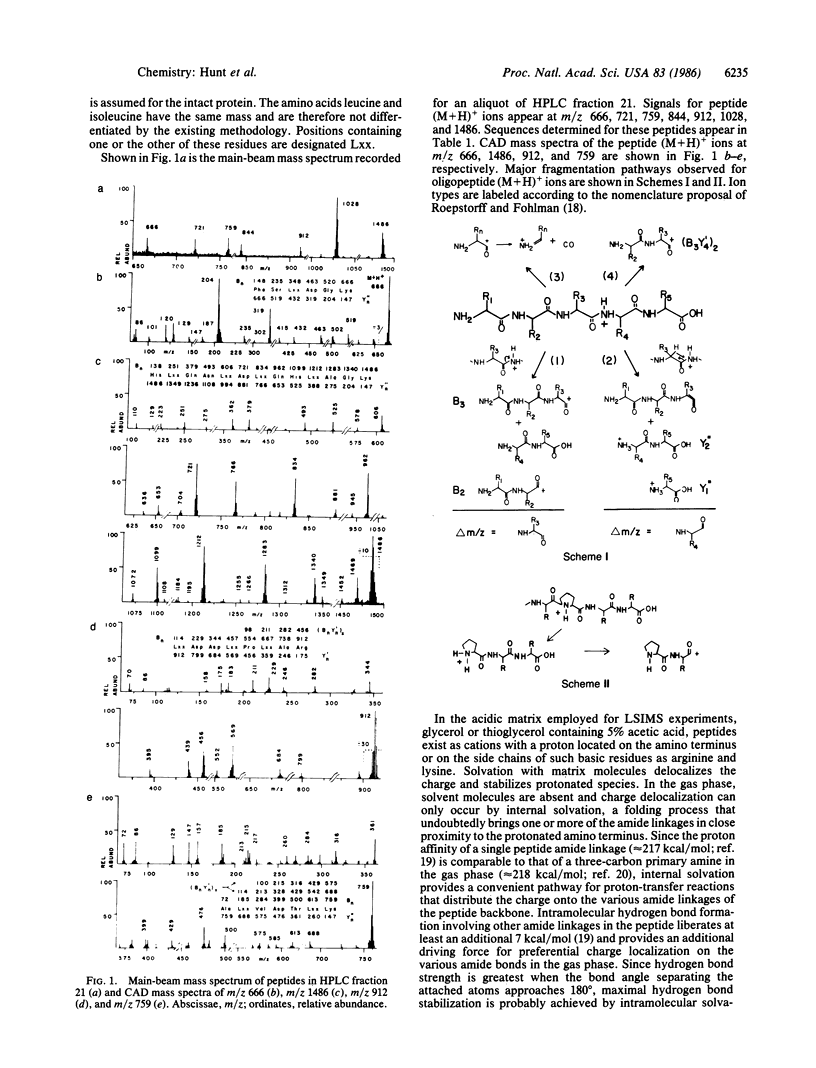
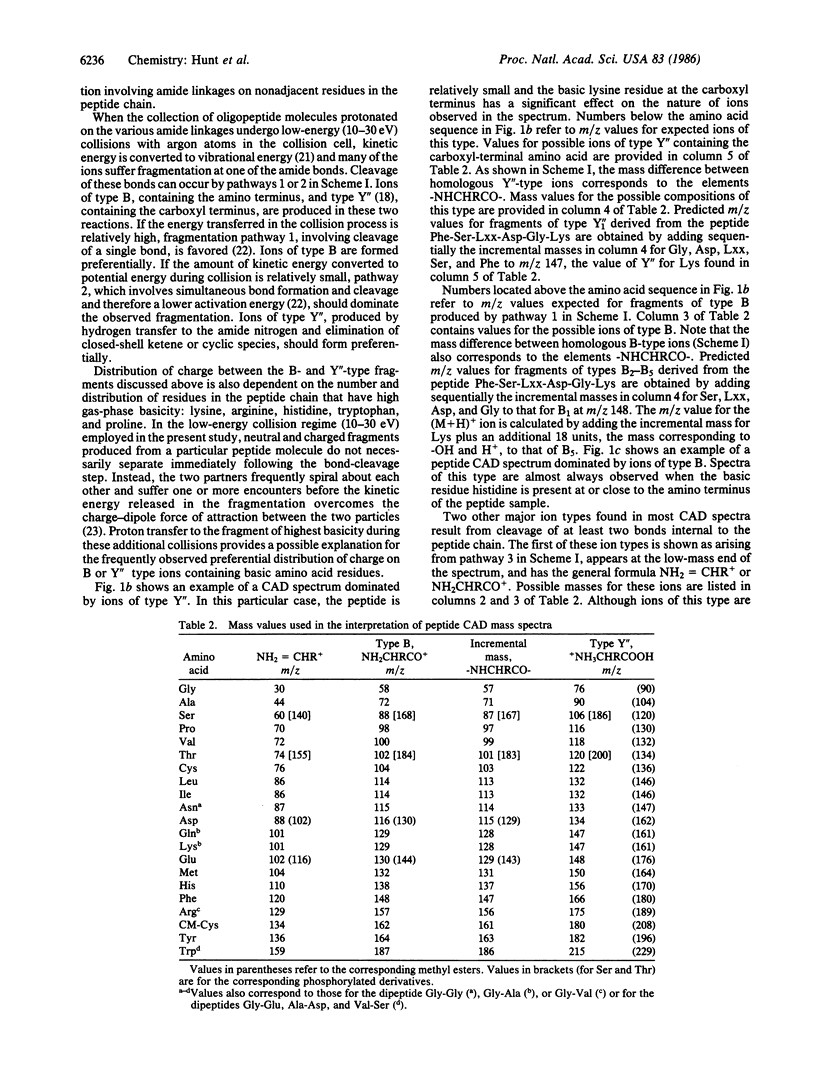
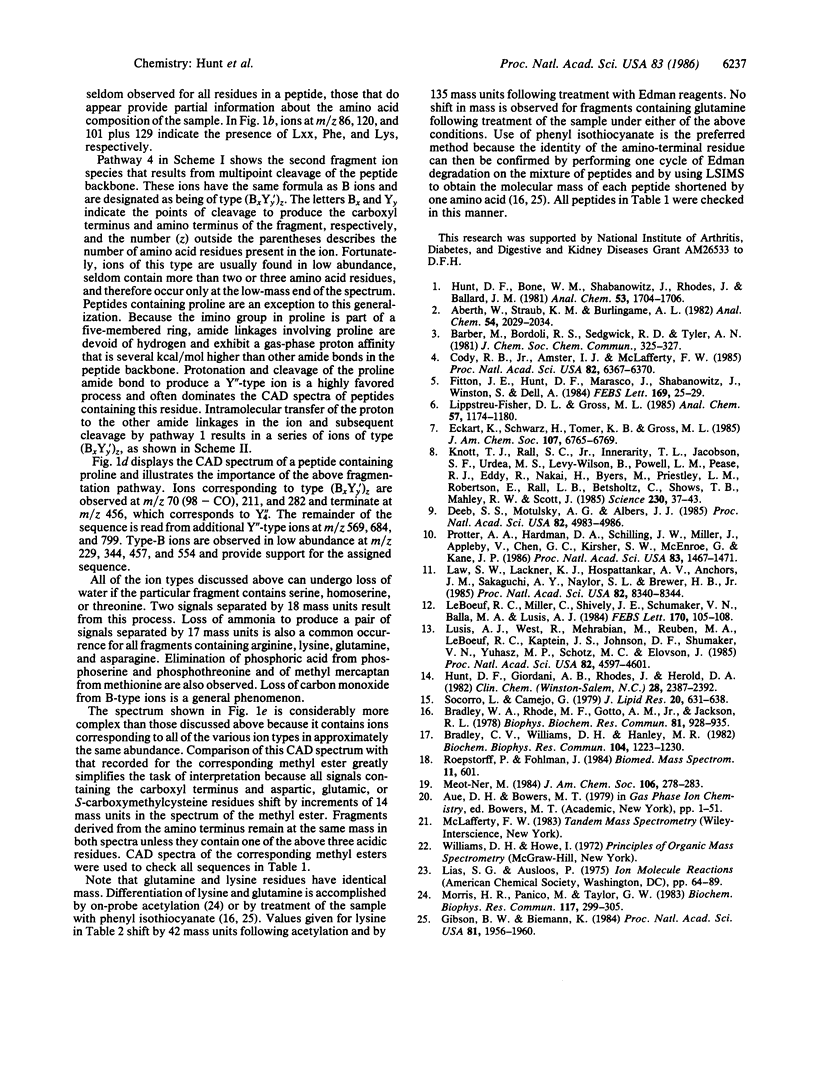
Selected References
These references are in PubMed. This may not be the complete list of references from this article.
- Bradley C. V., Williams D. H., Hanley M. R. Peptide sequencing using the combination of edman degradation, carboxypeptidase digestion and fast atom bombardment mass spectrometry. Biochem Biophys Res Commun. 1982 Feb 26;104(4):1223–1230. doi: 10.1016/0006-291x(82)91381-x. [DOI] [PubMed] [Google Scholar]
- Bradley W. A., Rohde M. F., Gotto A. M., Jr, Jackson R. L. The cyanogen bromide peptides of the apoprotein of low density lipoprotein (ApoB): its molecular weight from a chemical view. Biochem Biophys Res Commun. 1978 Apr 14;81(3):928–935. doi: 10.1016/0006-291x(78)91440-7. [DOI] [PubMed] [Google Scholar]
- Cody R. B., Jr, Amster I. J., McLafferty F. W. Peptide mixture sequencing by tandem Fourier-transform mass spectrometry. Proc Natl Acad Sci U S A. 1985 Oct;82(19):6367–6370. doi: 10.1073/pnas.82.19.6367. [DOI] [PMC free article] [PubMed] [Google Scholar]
- Deeb S. S., Motulsky A. G., Albers J. J. A partial cDNA clone for human apolipoprotein B. Proc Natl Acad Sci U S A. 1985 Aug;82(15):4983–4986. doi: 10.1073/pnas.82.15.4983. [DOI] [PMC free article] [PubMed] [Google Scholar]
- Gibson B. W., Biemann K. Strategy for the mass spectrometric verification and correction of the primary structures of proteins deduced from their DNA sequences. Proc Natl Acad Sci U S A. 1984 Apr;81(7):1956–1960. doi: 10.1073/pnas.81.7.1956. [DOI] [PMC free article] [PubMed] [Google Scholar]
- Hunt D. F., Giordani A. B., Rhodes G., Herold D. A. Mixture analysis by triple-quadrupole mass spectrometry: metabolic profiling of urinary carboxylic acids. Clin Chem. 1982 Dec;28(12):2387–2392. [PubMed] [Google Scholar]
- Knott T. J., Rall S. C., Jr, Innerarity T. L., Jacobson S. F., Urdea M. S., Levy-Wilson B., Powell L. M., Pease R. J., Eddy R., Nakai H. Human apolipoprotein B: structure of carboxyl-terminal domains, sites of gene expression, and chromosomal localization. Science. 1985 Oct 4;230(4721):37–43. doi: 10.1126/science.2994225. [DOI] [PubMed] [Google Scholar]
- Law S. W., Lackner K. J., Hospattankar A. V., Anchors J. M., Sakaguchi A. Y., Naylor S. L., Brewer H. B., Jr Human apolipoprotein B-100: cloning, analysis of liver mRNA, and assignment of the gene to chromosome 2. Proc Natl Acad Sci U S A. 1985 Dec;82(24):8340–8344. doi: 10.1073/pnas.82.24.8340. [DOI] [PMC free article] [PubMed] [Google Scholar]
- LeBoeuf R. C., Miller C., Shively J. E., Schumaker V. N., Balla M. A., Lusis A. J. Human apolipoprotein B: partial amino acid sequence. FEBS Lett. 1984 May 7;170(1):105–108. doi: 10.1016/0014-5793(84)81378-2. [DOI] [PubMed] [Google Scholar]
- Lusis A. J., West R., Mehrabian M., Reuben M. A., LeBoeuf R. C., Kaptein J. S., Johnson D. F., Schumaker V. N., Yuhasz M. P., Schotz M. C. Cloning and expression of apolipoprotein B, the major protein of low and very low density lipoproteins. Proc Natl Acad Sci U S A. 1985 Jul;82(14):4597–4601. doi: 10.1073/pnas.82.14.4597. [DOI] [PMC free article] [PubMed] [Google Scholar]
- Morris H. R., Panico M., Taylor G. W. FAB-mapping of recombinant-DNA protein products. Biochem Biophys Res Commun. 1983 Nov 30;117(1):299–305. doi: 10.1016/0006-291x(83)91575-9. [DOI] [PubMed] [Google Scholar]
- Protter A. A., Hardman D. A., Schilling J. W., Miller J., Appleby V., Chen G. C., Kirsher S. W., McEnroe G., Kane J. P. Isolation of a cDNA clone encoding the amino-terminal region of human apolipoprotein B. Proc Natl Acad Sci U S A. 1986 Mar;83(5):1467–1471. doi: 10.1073/pnas.83.5.1467. [DOI] [PMC free article] [PubMed] [Google Scholar]
- Roepstorff P., Fohlman J. Proposal for a common nomenclature for sequence ions in mass spectra of peptides. Biomed Mass Spectrom. 1984 Nov;11(11):601–601. doi: 10.1002/bms.1200111109. [DOI] [PubMed] [Google Scholar]
- Socorro L., Camejo G. Preparation and properties of soluble, immunoreactive apoLDL. J Lipid Res. 1979 Jul;20(5):631–638. [PubMed] [Google Scholar]


